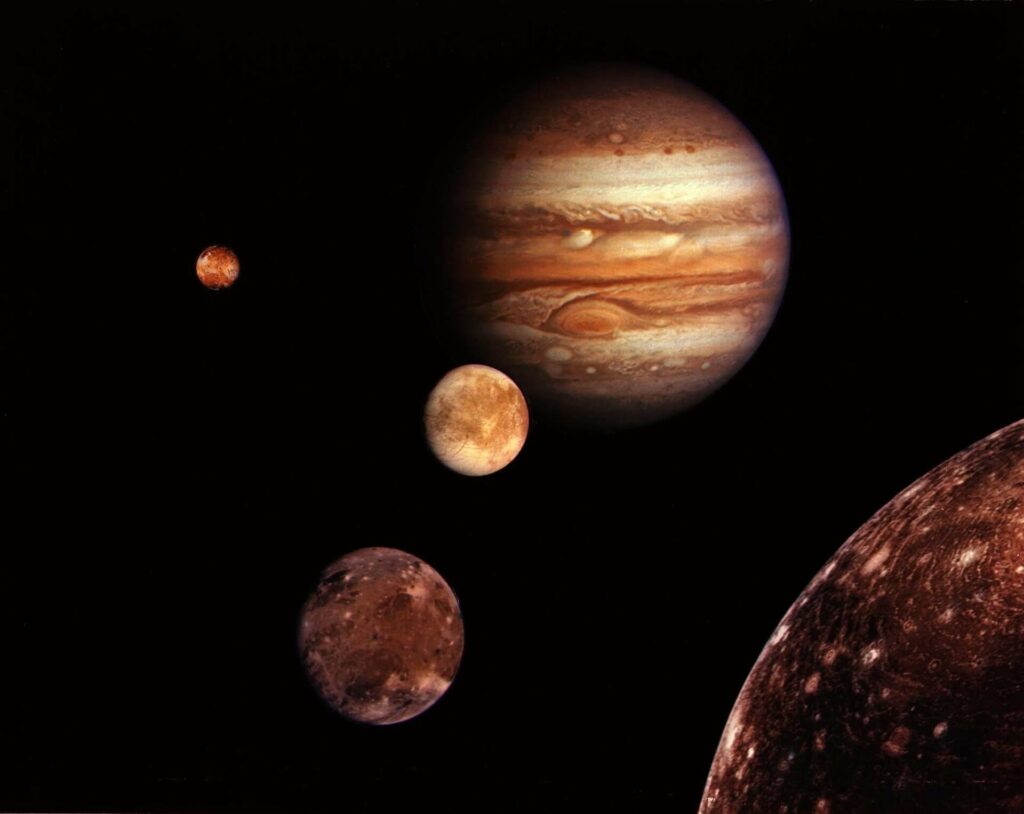In the coming decade, NASA and ESA plan to send two missions to the Jupiter system. One of their main targets will be Europa — a 3,000-kilometer satellite whose surface is completely covered in ice. It is believed that under the ice shell about a hundred kilometers thick, the ocean is hidden, containing more water than all the seas and oceans of our planet combined.
A team of astronomers from NASA’s jet propulsion laboratory has revealed that Jupiter’s moon Europa glows in the dark. Such a glow is obtained as a result of constant bombardment from Jupiter by electrons and other high-energy particles throughout the entire time of the satellite’s rotation, both during the day and at night. The glow itself appears when particles collide with the surface of Europa.
To the naked eye, the color of the glow can sometimes turn blue, and sometimes green or white, depending on the composition of the ice that is exposed to Jupiter’s radiation.
However, these results were obtained during a simulation conducted on Earth. To simulate the conditions maintained on Europa, a team of scientists created a special device. But we will be able to get more detailed information, when NASA sends the Europa Clipper research mission directly to the satellite. Scientists are already analyzing these results and evaluating whether the installed equipment on Europa Clipper can detect this glow.
And the main goal of Europa Clipper is to study Europa for its ability to support life. It is planned that the research umbrella will spend at least 109 days in the orbit of Europa, during this period the probe will make 45 orbits of the satellite at an altitude of 27 to 25 kilometers. As of 2019, analysts estimate the cost of the projector will be between 3.5 and 4 billion US dollars. However, the cost increases from year to year.
Why is Europa a special satellite of Jupiter?
The surface of this icy world is as smooth as the surface of our own planet, except for a few cracks caused by Jupiter’s gravitational tides. Although Europa is the sixth closest moon to the gas giant, its magnetic field helps protect it from radiation from its host planet.
At the same time, the surface of Europa is so cold that the ice on it is hard as concrete.
Observations using spacecraft and ground-based telescopes show that the area is strewn with chemical compounds such as sodium chloride and magnesium sulfate. On Earth, we know them as table salt and Epsom salt.
Salt scattered on the surface of Europa-is a necessary ingredient for a strange glow. As it turned out, the radiation of Jupiter has the same effect on these compounds as a large cup of coffee on a person. If you drink too much coffee, you will feel overexcited. The same thing happens with molecules and atoms. But molecules and atoms can’t stay in the excited state for long, so they return to their normal state, emitting energy in the form of visible light-photons.
“Due to the unique radiation environment and the rich geological and compositional diversity on its surface, the nighttime ice glow occurring on Europa may be unique and unlike any other phenomenon in our Solar system,” the scientists conclude.
